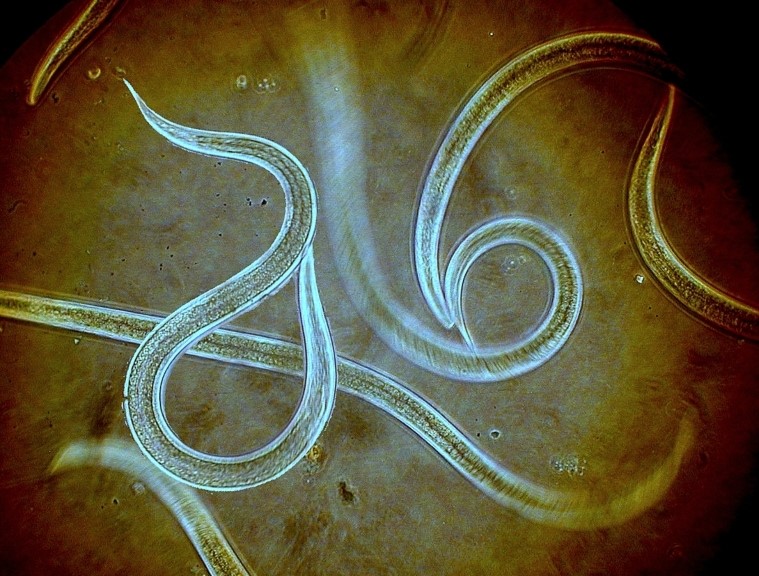
Nematodes. Those microscopic, worm-like creatures that enter or attach themselves to crop roots, pierce root tissue, suck up root juices, and destroy crop yields.
But did you know, plant-parasitic nematodes are only a very small fraction of the nematodes living in your soil? And did you know most nematodes are harmless to crops – and many are even beneficial?
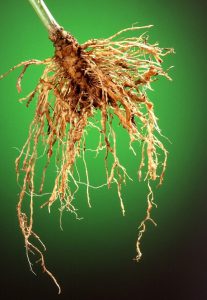
Although the threat of plant-parasitic nematodes damaging your crops is a concern, if a few important agricultural principles are followed – such as carefully designed crop rotations and building soil organic matter content – nematode-induced yield losses can be drastically reduced, while supporting nematode populations that will actually benefit your crops.
Nematodes are most abundant in the upper-most soil horizons, where up to 10 million individual nematodes can live per 10 square feet of soil. They subsist mostly in water-filled pore space near organic matter and plant roots.
Because of havoc they can cause, plant parasitic nematodes, such as root-knot nematodes, have been the species most widely studied by scientists. But there are many other types of nematodes less studied, generally classified by their mouthparts and diet. Some strictly feed on either fungi or bacteria, while others are predatory, relying on other nematodes or protozoa for their diet; and others are omnivorous, able to feed on fungi and bacteria when their preferred prey is scarce, or conditions are unfavorable.
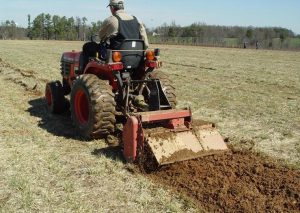
Different types of nematodes play different roles in a soil system. In row crop systems, maintaining a diversified food web through soil conservation and organic matter additions can support nematode populations that actually enhance nutrient mineralization and plant nutrient availability. This is especially beneficial in farming systems reliant on organic nutrient sources, as bacterial feeding nematodes consume nitrogen-containing bacteria and release excess nitrogen as plant available ammonium (NH4+). Nematodes can also rejuvenate old bacterial and fungal colonies and spread these microorganisms into organic residues whose nutrients may otherwise remain immobile and unavailable to plants.
Although overly intensive tillage can disturb the soil food web, properly managed tillage can actually promote healthy soil ecosystems. Light soil disturbances – especially coupled with compost and manure additions – increase the availability of organic residues to be consumed by bacteria, which in turn stimulate bacterial feeding nematodes, leading to a net increase of available nitrogen for plant uptake. And although fungal feeding nematodes are more abundant in no-till and perennial agricultural systems, bacterial feeding nematodes are better at releasing plant available nitrogen than their fungal feeding counterparts.
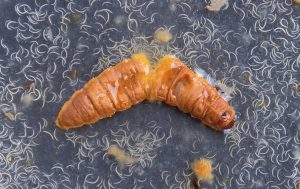
Another type of nematode that can be beneficial to farming systems is the insect-parasitic bacterial feeding nematode. These nematodes, such as the species Heterorhabditis bacteriophora and Steinernema scapterisci, have mutualistic relationships with bacteria, in that both the nematode and bacteria rely on one another to reproduce and grow. In their infective juvenile stage, these specialized nematodes carry within their intestines specific bacteria. The nematodes can penetrate the body of many insect hosts, such as cutworms, mole crickets, citrus weevils, sawfly and fungus gnat larvae, and many more depending on nematode species, and release the bacteria into the insect’s body cavity where it multiplies to the point of killing the insect. This allows the nematode to develop into an adult inside the insect’s body and reproduce new juveniles, which emerge from the cadaver to search for a new host. Thousands of nematodes can be produced from just one infected insect host. These types of nematodes are even available commercially as a biological insect control, most commonly applied to moistened fields as liquid suspensions at a rate of about one million per acre, depending on the crop. As they are living organisms, care must be taken not to kill the nematodes with excessive pressure, temperature, agitation, or sun exposure. It is also important to select the correct nematode species to match target insect pests.
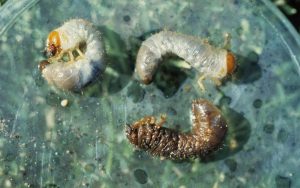
Predatory nematodes have biological control capabilities as well, in that they can regulate populations of other nematodes – bacterial and fungal feeding – and most importantly, root-eating plant parasitic nematodes. And as part of any healthy soil food web, there are a wide variety of natural enemies that help keep in check nematode populations, such as predatory microarthropods and nematode ensnaring fungi. Agricultural systems designed to support a healthy soil ecosystem can therefore more successfully defend against plant parasitic nematodes and other crop diseases and pests. They can also facilitate enhanced nutrient cycling, which supports plant nutrient uptake, leading to overall healthy crop growth.
(Article originally posted on UF/IFAS Panhandle Ag E-News)
 1
1
